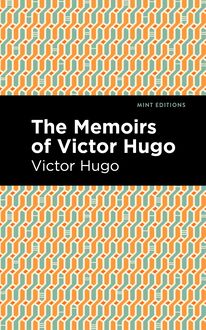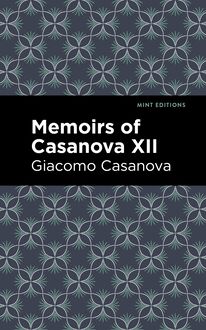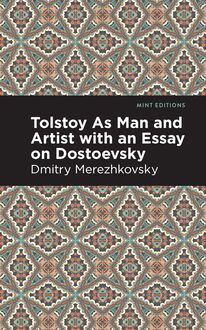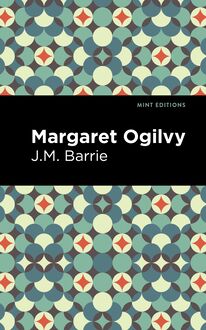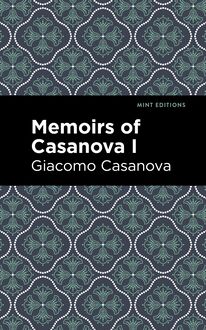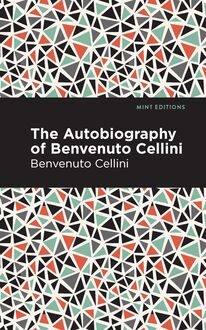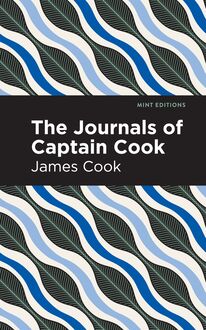-
 Univers
Univers
-
 Ebooks
Ebooks
-
 Livres audio
Livres audio
-
 Presse
Presse
-
 Podcasts
Podcasts
-
 BD
BD
-
 Documents
Documents
-
- Cours
- Révisions
- Ressources pédagogiques
- Sciences de l’éducation
- Manuels scolaires
- Langues
- Travaux de classe
- Annales de BEP
- Etudes supérieures
- Maternelle et primaire
- Fiches de lecture
- Orientation scolaire
- Méthodologie
- Corrigés de devoir
- Annales d’examens et concours
- Annales du bac
- Annales du brevet
- Rapports de stage
La lecture à portée de main
Vous pourrez modifier la taille du texte de cet ouvrage
Découvre YouScribe en t'inscrivant gratuitement
Je m'inscrisDécouvre YouScribe en t'inscrivant gratuitement
Je m'inscrisEn savoir plus
Vous pourrez modifier la taille du texte de cet ouvrage
En savoir plus

Description
Benvenuto Cellini started getting onto trouble at a young age. By age sixteen, he had already been exiled from his hometown for six months due to a public assault of another citizen. As a man with endless talents—sculpting, drafting, writing, music, Cellini enjoyed dabbling in many different art forms, a career that enabled him to travel to various major cities. After apprenticing for a goldsmith, Cellini moved to Rome at age nineteen. There, Pope Clement praised his work. However, Cellini’s relationship with Clement was the last time he stood in good graces with a Pope. After insulting Pope Clément’s successor, Pope Farnese, Cellini left Rome to pursue work in France, fearing that he would be arrested if he stayed. However, his travels did not protect him from the wrath of Pope Farnese. After being accused of the theft of precious Vatican items, Cellini was imprisoned. Deciding to take matters into his own hands, Cellini organizes a prison escape. Though his feud with Pope Farnese greatly complicated his life, Cellini relishes making enemies, and finds humor in every situation he is in. With stories of sexual conquests, murder, escapes, near-death experiences, and artistic endeavors, Benvenuto Cellini reveals all the salacious details of his exhilarating life.
Though he exposes many ugly personality traits that he possesses, Cellini himself does not believe that he has faults, and only admits to being wrong once in his life. Despite this, Cellini possesses an influential amount of charisma, which is as evident in his written work as it was in his life. Autobiography by Benvenuto Cellini provides a privileged look into the social life of the Italian Renaissance, and preserves the memory of the incredible artistic work of Cellini, most of which has been lost to time. Because of the fascinating and atypical life Cellini led, paired with his charisma and humor, Autobiography has remained to feel exciting and relevant to a modern audience, both for entertainment and educational purposes.
Now with an eye-catching cover design and printed in a readable font, Benvenuto Cellini’s Autobiography is accessible for a contemporary audience, preserving the wit and grandeur of work, while renovating it to appeal to a modern audience.
Sujets
Informations
| Publié par | Mint Editions |
| Date de parution | 05 janvier 2021 |
| Nombre de lectures | 0 |
| EAN13 | 9781513274034 |
| Langue | English |
| Poids de l'ouvrage | 2 Mo |
Informations légales : prix de location à la page 0,0600€. Cette information est donnée uniquement à titre indicatif conformément à la législation en vigueur.
Extrait
The Autobiography of Benvenuto Cellini
Benvenuto Cellini
The Autobiography of Benvenuto Cellini was first published in 1558.
This edition published by Mint Editions 2021.
ISBN 9781513269030 | E-ISBN 9781513274034
Published by Mint Editions®
minteditionbooks.com
Publishing Director: Jennifer Newens
Design & Production: Rachel Lopez Metzger
Project Manager: Micaela Clark
Translated by: John Addington Symonds
Typesetting: Westchester Publishing Services
C ONTENTS I NTRODUCTORY S ONNET I NTRODUCTORY N OTE PART I I II III IV V VI VII VIII IX X XI XII XIII XIV XV XVI XVII XVIII XIX XX XXI XXII XXIII XXIV XXV XXVI XXVII XXVIII XXIX XXX XXXI XXXII XXXIII XXXIV XXXV XXXVI XXXVII XXXVIII XXXIX XL XLI XLII XLIII XLIV XLV XLVI XLVII XLVIII XLIX L LI LII LIII LIV LV LVI LVII LVIII LIX LX LXI LXII LXIII LXIV LXV LXVI LXVII LXVIII LXIX LXX LXXI LXXII LXXIII LXXIV LXXV LXXVI LXXVII LXXVIII LXXIX LXXX LXXXI LXXXII LXXXIII LXXXIV LXXXV LXXXVI LXXXVII LXXXVIII LXXXIX XC XCI XCII XCIII XCIV XCV XCVI XCVII XCVIII XCIX C CI CII CIII CIV CV CVI CVII CVIII CIX CX CXI CXII CXIII CXIV CXV CXVI CXVII CXVIII CXIX CXX CXXI CXXII CXXIII CXXIV CXXV CXXVI CXXVII PART II I II III IV V VI VII VIII IX X XI XII XIII XIV XV XVI XVII XVIII XIX XX XXI XXII XXIII XXIV XXV XXVI XXVII XXVIII XXIX XXX XXXI XXXII XXXIII XXXIV XXXV XXXVI XXXVII XXXVIII XXXIX XL XLI XLII XLIII XLIV XLV XLVI XLVII XLVIII XLIX L LI LII LIII LIV LV LVI LVII LVIII LIX LX LXI LXII LXIII LXIV LXV LXVI LXVII LXVIII LXIX LXX LXXI LXXII LXXIII LXXIV LXXV LXXVI LXXVII LXXVIII LXXIX LXXX LXXXI LXXXII LXXXIII LXXXIV LXXXV LXXXVI LXXXVII LXXXVIII LXXXIX XC XCI XCII XCIII XCIV XCV XCVI XCVII XCVIII XCIX C CI CII CIII CIV CV CVI CVII CVIII CIX CX CXI CXII CXIII
I NTRODUCTORY S ONNET
This tale of my sore-troubled life I write,
To thank the God of nature, who conveyed
My soul to me, and with such care hath stayed
That divers noble deeds I’ve brought to light.
’Twas He subdued my cruel fortune’s spite:
Life glory virtue measureless hath made
Such grace worth beauty be through me displayed
That few can rival, none surpass me quite.
Only it grieves me when I understand
What precious time in vanity I’ve spent-
The wind it beareth man’s frail thoughts away.
Yet, since remorse avails not, I’m content,
As erst I came, W ELCOME to go one day,
Here in the Flower of this fair Tuscan land.
I NTRODUCTORY N OTE
A mong the vast number of men who have thought fit to write down the history of their own lives, three or four have achieved masterpieces which stand out preeminently: Saint Augustine in his “Confessions,” Samuel Pepys in his “Diary,” Rousseau in his “Confessions.” It is among these extraordinary documents, and unsurpassed by any of them, that the autobiography of Benvenuto Cellini takes its place.
The “Life” of himself which Cellini wrote was due to other motives than those which produced its chief competitors for first place in its class. St. Augustine’s aim was religious and didactic, Pepys noted down in his diary the daily events of his life for his sole satisfaction and with no intention that any one should read the cipher in which they were recorded. But Cellini wrote that the world might know, after he was dead, what a fellow he had been; what great things he had attempted, and against what odds he had carried them through. “All men,” he held, “whatever be their condition, who have done anything of merit, or which verily has a semblance of merit, if so be they are men of truth and good repute, should write the tale of their life with their own hand.” That he had done many things of merit, he had no manner of doubt. His repute was great in his day, and perhaps good in the sense in which he meant goodness; as to whether he was a man of truth, there is still dispute among scholars. Of some misrepresentations, some suppressions of damaging facts, there seems to be evidence only too good-a man with Cellini’s passion for proving himself in the right could hardly have avoided being guilty of such-; but of the general trustworthiness of his record, of the kind of man he was and the kind of life he led, there is no reasonable doubt.
The period covered by the autobiography is from Cellini’s birth in 1500 to 1562; the scene is mainly in Italy and France. Of the great events of the time, the time of the Reformation and the Counter-Reformation, of the strife of Pope and Emperor and King, we get only glimpses. The leaders in these events appear in the foreground of the picture only when they come into personal relations with the hero; and then not mainly as statesmen or warriors, but as connoisseurs and patrons of art. Such an event as the Sack of Rome is described because Benvenuto himself fought in it.
Much more complete is the view he gives of the artistic life of the time. It was the age of Michelangelo, and in the throng of great artists which then filled the Italian cities, Cellini was no inconsiderable figure. Michelangelo himself he knew and adored. Nowhere can we gain a better idea than in this book of the passionate enthusiasm for the creation of beauty which has bestowed upon the Italy of the Renaissance its greatest glory.
Very vivid, too, is the impression we receive of the social life of the sixteenth century; of its violence and licentiousness, of its zeal for fine craftsmanship, of its abounding vitality, its versatility and its idealism. For Cellini himself is an epitome of that century. This man who tells here the story of his life was a murderer and a braggart, insolent, sensual, inordinately proud and passionate; but he was also a worker in gold and silver, rejoicing in delicate chasing and subtle modelling of precious surfaces; a sculptor and a musician; and, as all who read his book must testify, a great master of narrative. Keen as was Benvenuto’s interest in himself, and much as he loved to dwell on the splendor of his exploits and achievements, he had little idea that centuries after his death he would live again, less by his “Perseus” and his goldsmith’s work than by the book which he dictated casually to a lad of fourteen, while he went about his work.
The autobiography was composed between 1558 and 1566, but it brings the record down only to 1562. The remainder of Cellini’s life seems to have been somewhat more peaceful. In 1565 he married Piera de Salvadore Parigi, a servant who had nursed him when he was sick; and in the care of his children, as earlier of his sister and nieces, he showed more tenderness than might have been expected from a man of his boisterous nature. He died at Florence, May 13, 1571, and was buried in The Church of the Annunziata in that city.
PART I
I
A ll men of whatsoever quality they be, who have done anything of excellence, or which may properly resemble excellence, ought, if they are persons of truth and honesty, to describe their life with their own hand; but they ought not to attempt so fine an enterprise till they have passed the age of forty. This duty occurs to my own mind now that I am travelling beyond the term of fifty-eight years, and am in Florence, the city of my birth. Many untoward things can I remember, such as happen to all who live upon our earth; and from those adversities I am now more free than at any previous period of my career-nay, it seems to me that I enjoy greater content of soul and health of body than ever I did in bygone years. I can also bring to mind some pleasant goods and some inestimable evils, which, when I turn my thoughts backward, strike terror in me, and astonishment that I should have reached this age of fifty-eight, wherein, thanks be to God, I am still travelling prosperously forward.
II
I t is true that men who have laboured with some show of excellence, have already given knowledge of themselves to the world; and this alone ought to suffice them; I mean the fact that they have proved their manhood and achieved renown. Yet one must needs live like others; and so in a work like this there will always be found occasion for natural bragging, which is of divers kinds, and the first is that a man should let others know he draws his lineage from persons of worth and most ancient origin.
I am called Benvenuto Cellini, son of Maestro Giovanni, son of Andrea, son of Cristofano Cellini; my mother was Madonna Elisabetta, daughter to Stefano Granacci; both parents citizens of Florence. It is found written in chronicles made by our ancestors of Florence, men of old time and of credibility, even as Giovanni Villani writes, that the city of Florence was evidently built in imitation of the fair city of Rome; and certain remnants of the Colosseum and the Baths can yet be traced. These things are near Santa Croce. The Capitol was where is now the Old Market. The Rotonda is entire, which was made for the temple of Mars, and is now dedicated to our Saint John. That thus is was, can very well be seen, and cannot be denied, but the said buildings are much smaller than those of Rome. He who caused them to built, they say, was Julius C æ sar, in concert with some noble Romans, who, when Fiesole had been stormed and taken, raised a city in this place, and each of them took in hand to erect one of these notable edifices.
Julius C æ sar had among his captains a man of highest rank and valour, who was called Fiorino of Cellino, which is a village about two miles distant from Monte Fiascone. Now this Fiorino took up his quarters under the hill of Fiesole, on the ground where Florence now stands, in order to be near the river Arno, and for the convenience of the troops. All those soldiers and others who had to do with the said captain, used then to say: “Let us go to Fiorenze;” as well because the said captain was called Fiorino, as also because the place he had chosen for his quarters was by nature very rich in flowers. Upon the foundation of the city, therefore, since this name struck Julius C æ sar as being fair and apt, and given by circumstance, and seein
-
 Univers
Univers
-
 Ebooks
Ebooks
-
 Livres audio
Livres audio
-
 Presse
Presse
-
 Podcasts
Podcasts
-
 BD
BD
-
 Documents
Documents
-
Jeunesse
-
Littérature
-
Ressources professionnelles
-
Santé et bien-être
-
Savoirs
-
Education
-
Loisirs et hobbies
-
Art, musique et cinéma
-
Actualité et débat de société
-
Jeunesse
-
Littérature
-
Ressources professionnelles
-
Santé et bien-être
-
Savoirs
-
Education
-
Loisirs et hobbies
-
Art, musique et cinéma
-
Actualité et débat de société
-
Actualités
-
Lifestyle
-
Presse jeunesse
-
Presse professionnelle
-
Pratique
-
Presse sportive
-
Presse internationale
-
Culture & Médias
-
Action et Aventures
-
Science-fiction et Fantasy
-
Société
-
Jeunesse
-
Littérature
-
Ressources professionnelles
-
Santé et bien-être
-
Savoirs
-
Education
-
Loisirs et hobbies
-
Art, musique et cinéma
-
Actualité et débat de société
- Cours
- Révisions
- Ressources pédagogiques
- Sciences de l’éducation
- Manuels scolaires
- Langues
- Travaux de classe
- Annales de BEP
- Etudes supérieures
- Maternelle et primaire
- Fiches de lecture
- Orientation scolaire
- Méthodologie
- Corrigés de devoir
- Annales d’examens et concours
- Annales du bac
- Annales du brevet
- Rapports de stage
